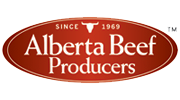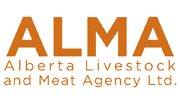Feedlot Lameness
| Project Code: | 0011-008 |
| Completed: | November 2016 |
Project Title:
Occurrence, characterization and risk factors associated with lameness within Alberta feedlots
Researchers:
Dr. Karen Schwartzkopf-Genswein Karen.Genswein@AGR.GC.CA
Dr. Karen Schwartzkopf-Genswein (Agriculture and Agri-Food Canada, Lethbridge); Dr. Eugene Janzen, Dr. Karin Orsel, Dr. Ed Pajor (University of Calgary); Dr. Mike Jelinski, Dr. Craig Dorin (Veterinary Agri-Health Services); Dr. Jan Shearer, Dr. Suzanne Millman (Iowa State University)
Lameness in cattle is a very visible animal welfare issue. Reported incidence of lameness at slaughter ranges from 15-30%. Previous data collected by these researchers indicated the prevalence of lameness of 32.8-52.8% at three Alberta feedlots. Feedlot diagnoses from that research showed lameness accounted for 37.4% of animals in the chronic pen, while respiratory disease represented 35.7%, and respiratory disease in combination with lameness 10.9%. Previous research has primarily focused on effective treatment options, which provide a starting point for management protocols, but do not address the underlying cause(s).
Objectives:The objectives of this study were to:
1) Determine the relative occurrence of lameness in both healthy and hospital/chronic pens by season and any relationship to other health problems
2) Characterize the types of lameness observed and potential causes
3) Identify environmental or managerial factors associated with increased lameness.
What They Did:The first portion of the project analyzed a database of feedlot health records from 29 feedlots over a five-year period to document the incidence of lameness within healthy, hospital, and chronic pens, the incidence of lameness compared to other diseases, occurrence of a specific lameness diagnosis, and characterization of lameness by season, body weight, days on feed and sex of animal. Over 574,000 records were in the database, however, not all feedlots had all the data as described above, so records from over 115,000 animals were used.
To supplement this data, lameness was also studied using the herd health records from three lots with a greater than 10,000 head capacity over a two-year period. Animal health records including sex, origin, class of cattle, body weight, rectal temperature, vaccination and implant history, treatment records, and lameness relapse rate were collected, along with feedlot management factors like diet composition, use of beta-agonists, zinc supplements, feeding strategy, etc., and environmental conditions (including mud depth).
At those same large feedlots, a live animal study was conducted, examining gait score on lame animals pulled for treatment, tag score, salivary cortisol levels, thermographic imaging to look at inflammation, and a subset of lame animals were measured for substance P (an indicator of pain). At the same time, healthy, non-lame controls went through the same data collection. Chronically lame cattle were assessed weekly for the time they remained in the chronic pen with the same methodology described above. The study also intended to look at euthanized animals, however the number of animals euthanized at these three lots was extremely low, so instead the researchers evaluated an outbreak of digital dermatitis (also known as hairy heel wart).
What They Learned:From the analysis of health records, lameness was the second most-treated condition at feedlots, following respiratory disease, representing 30.4% of all treated animals/year. The most common lameness diagnosis was foot rot at 72%, followed by joint infection at 19.3%, and lame with no swelling at 5.5%. There is a seasonality component to lameness, with spring and fall having more lame cattle recorded. Foot rot cases were more common in spring, while injuries and joint infections were more common in fall.
The live animal study found that approximately 15% of the cattle pulled for lameness had a severe or highly severe gait score (arched back, obvious reduced weight bearing, secondary signs of pain). There were no differences between salivary cortisol levels (a measure of acute stress) in lame and non-lame cattle, however, handling may have increased the baseline in all animals, making it difficult to detect differences. Hair cortisol analysis (a measure of chronic stress) is pending. Average daily gains of chronically lame cattle were 0.68 lb/day compared to 3-3.5 lb/day in non-lame cattle.
Lameness relapse rates varied between lots from 3.5% to 8.1% for animals treated twice for the same lameness diagnosis. Mortality due to lameness also varied between lots from 3.4% to 11%. Winter placed calves and yearlings had 2 and 6.2 times greater odds of becoming lame. Lameness incidence increased by 0.3% for every additional day on feed and by 0.7% for every additional animal in the pen, but was decreased by 1.5% for every additional meter of bunk space in the pen and by 0.8% for every additional percentage of forage in the diet. Lameness severity was greater in animals lame in a front leg versus a hind leg, and auction sourced cattle were twice as likely to be severely lame than those direct sourced. Lameness severity also increased by 0.4% for every additional day on feed, with the number of implants/vaccinations/treatments given, and in pens with mud depth greater than 5 cm.
Results from the investigation of the digital dermatitis outbreak demonstrated that at least some of the cases of digital dermatitis were caused by invasive spirochetes, which is the same main cause of digital dermatitis in dairy cattle. This indicates that the same treatments used in dairy cattle, such as foot baths, topical antibiotics, and trace mineral supplementation, should be effective for reducing digital dermatitis in beef cattle as well.
The cost of treating lameness varied between $8.40 and $42.20 depending on diagnosis and treatment protocol. Each relapse added $3.50 for each lame animal in the feedlot to the treatment cost. Labour cost for pulling and treating lameness was $11.20/lame animal. Lame cattle weighed 48.5 lb less than their non-lame pen mates at slaughter, on average, representing a production loss of approximately $89.54/animal (prices based on spring 2016 marketing at 1400 lb liveweight).
Total economic cost of lameness for an animal pulled and treated once for lameness would be between $109.14.5 and $142.9.
What It Means:Very few studies have examined feedlot lameness in detail. Lameness accounts for 30% of all animal health problems, second only to respiratory disease in terms of animal welfare and economic impacts. There is a need for improved diagnosis and targeted treatment protocols associated with specific types of lameness to reduce relapse rates and improve animal welfare. This study identified 38 risk factors affecting both the incidence and severity of lameness in feedlot cattle. The most important of these, in no particular order, were heavier weight cattle, increased days on feed, increased stocking density in a pen, reduced forage content in the diet, number of handling events, auction sourced, and increased mud depth. These findings have the potential to improve lameness diagnosis, treatment protocols and lameness outcomes through the development of a lameness decision tree, which will be completed after more lameness cases and samples are analyzed.
This project was also supported by the Alberta Livestock and Meat Agency








